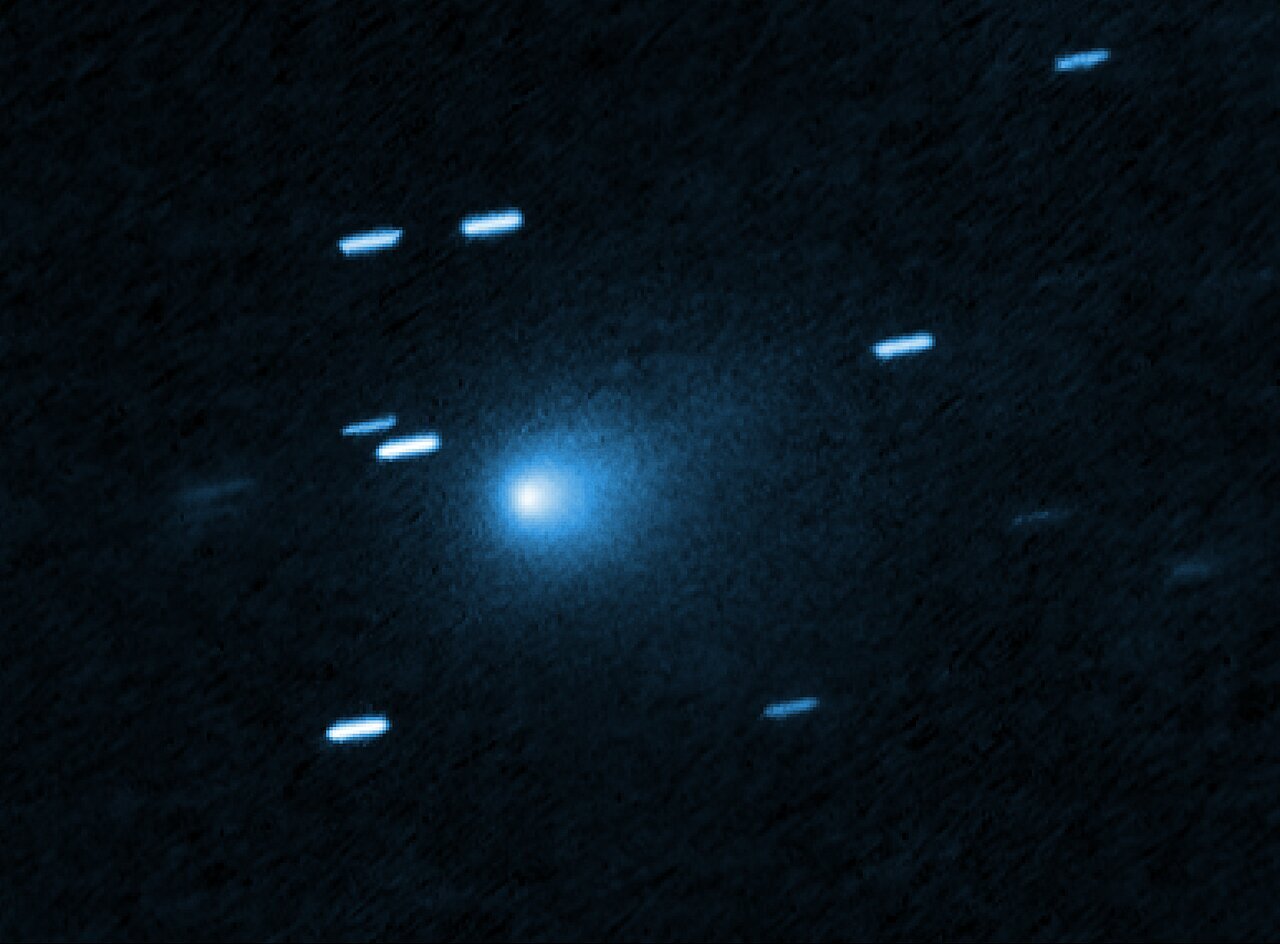10.08.2025

This is a Hubble Space telescope image of the interstellar comet 3I/ATLAS. Hubble photographed the comet on 21 July 21 2025, when the comet was 365 million kilometres from Earth. Hubble shows that the comet has a teardrop-shaped cocoon of dust coming off its solid, icy nucleus. Because Hubble was tracking the comet moving along a hyperbolic trajectory, the stationary background stars are streaked in the exposure.
[Image description: At the center of the image is a comet that appears as a teardrop-shaped bluish cocoon of dust coming off the comet’s solid, icy nucleus and seen against a black background. The comet appears to be heading to the bottom left corner of the image. About a dozen short, light blue diagonal streaks are seen scattered across the image, which are from background stars that appeared to move during the exposure because the telescope was tracking the moving comet.]
Credit: NASA, ESA, D. Jewitt (UCLA); Image Processing: J. DePasquale (STScI)
A team of astronomers has taken the sharpest-ever picture of the unexpected interstellar comet 3I/ATLAS, using the crisp vision of the NASA/ESA Hubble Space Telescope.
Hubble's observations are allowing astronomers to more accurately estimate the size of the comet’s solid icy nucleus. The upper limit on the diameter of the nucleus is 5.6 kilometers, though it could be as small as 320 metres across, researchers report. Though the Hubble images put tighter constraints on the nucleus size compared to previous ground-based estimates, the solid heart of the comet presently cannot be directly seen, even by Hubble. Observations from other observatories, including the NASA/ESA/CSA James Webb Space Telescope, will help refine our knowledge about the comet, including its chemical makeup.
Hubble also captured a dust plume ejected from the Sun-warmed side of the comet, and the hint of a dust tail streaming away from the nucleus. Hubble’s data yields a dust-loss rate consistent with comets that are first detected around 480 million kilometres from the Sun. This behaviour is much like the signature of previously seen Sun-bound comets originating within our Solar System.
The big difference is that this interstellar visitor originated in some other Solar System elsewhere in our Milky Way galaxy.
3I/ATLAS is traveling through our Solar System at roughly 210,000 kilometres per hour, the highest velocity ever recorded for a Solar System visitor. This breathtaking sprint is evidence that the comet has been drifting through interstellar space for many billions of years. The gravitational slingshot effect from innumerable stars and nebulae the comet passed added momentum, ratcheting up its speed. The longer 3I/ATLAS was out in space, the higher its speed grew.
This comet was discovered by the Asteroid Terrestrial-impact Last Alert System (ATLAS) on 1 July 2025 at a distance of 675 million kilometres from the Sun. 3I/ATLAS should remain visible to ground-based telescopes through September, after which it will pass too close to the Sun to observe and is expected to reappear on the other side of the Sun by early December.
Quelle: ESA
